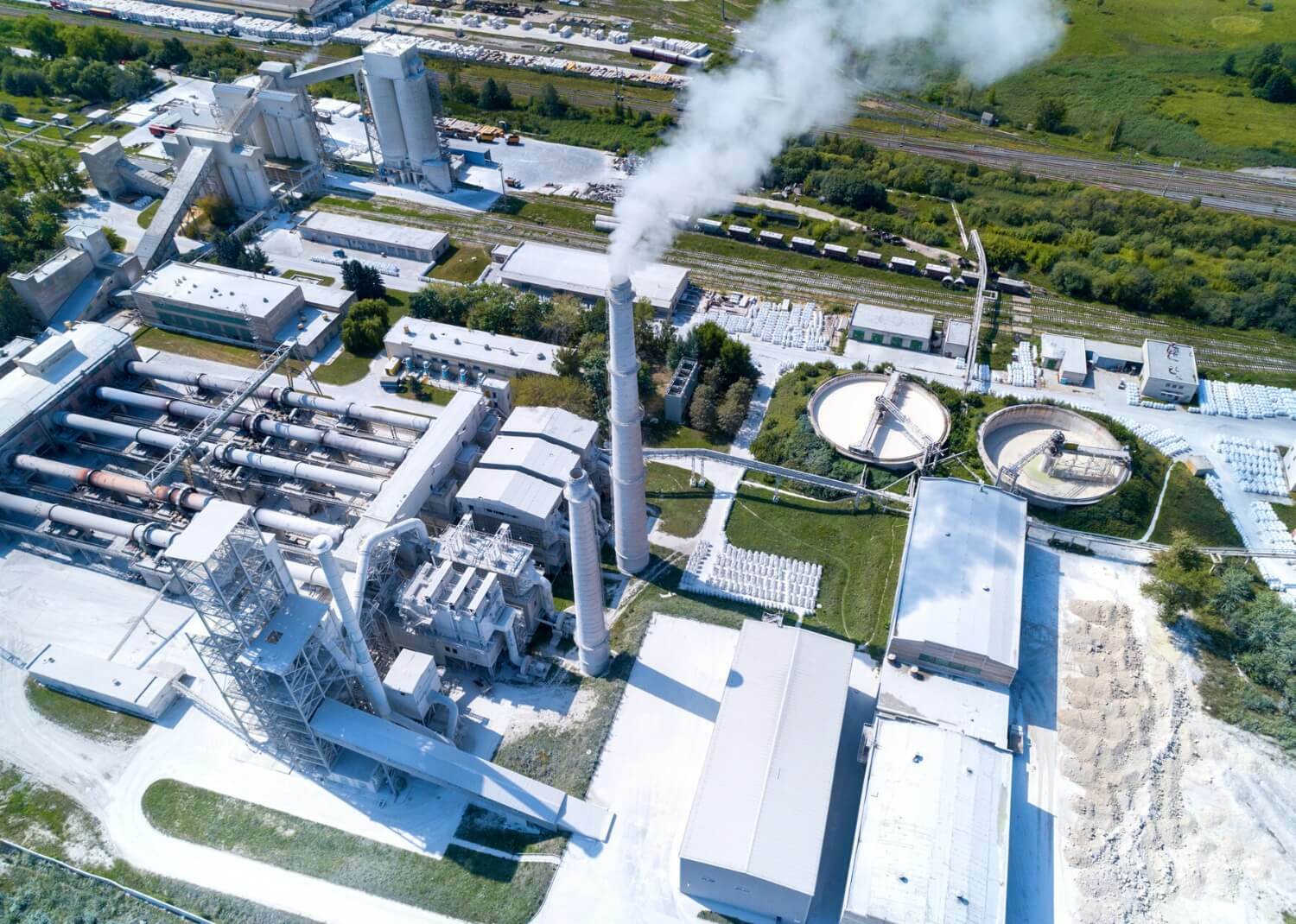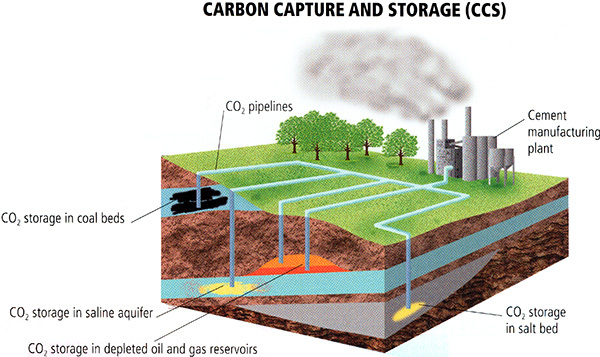Navigating The Class VI Injection Permit Process For Carbon Sequestration

As is easily apparent to anyone living in a modern economy who pauses to look around them, cement plays a tremendously important role in our lives. From roadways and buildings to all manner of critical infrastructure, cement is ubiquitous and deeply engrained in our construction and development practices. Indeed, it’s humanity’s most widely used material other than water.
According to a 2018 study, cement manufacturing accounts for about 8% of global CO2 emissions. While some of this is related to fuel consumption, approximately 60% is the product of the clinkerization process. These emissions cannot be reduced through fuel efficiency or switching, however, and since cement and concrete have such attractive material properties and their demand is likely to remain strong, meaningful reductions in CO2 emissions from the cement manufacturing sector will require a means to capture and store the CO2 before it reaches the atmosphere.
A likely alternative to achieve this is underground carbon sequestration. The underground storage of CO2 has a lot in common with the underground storage of natural gas and CO2 flooding of oil reservoirs, but there are some important differences. High on the list is the permitting process for carbon storage wells and reservoirs, and the purpose of this article is to provide some insight into those differences.
CO2 Sequestration Permitting Process
The permanent underground storage of carbon dioxide (CO2 sequestration) is achieved by injecting CO2 into underground formations through injection wells. To protect underground sources of drinking water (USDW), the injection of fluids into underground formations is a regulated activity that requires an injection permit. According to the U.S. Environmental Protection Agency (EPA), there were over 740,000 active regulated injection wells in the U.S. in 2020, which are divided into six different permit classes depending on their purpose.
Approximately 70% of the injection wells in the U.S. are Class V wells for the disposal of non-hazardous wastes such as stormwater. Better known to those in the oil and gas industry are the approximately 180,000 Class II water and CO2 injection wells used for secondary and enhanced recovery operations and for saltwater disposal.
READ MORE: Comparing Underground Natural Gas Storage With Deep Saline Injection Of Carbon Dioxide
The underground sequestration of CO2 requires a Class VI permit, however, and the process of obtaining one is substantially more complex and time-consuming than for a Class II permit. Class VI injection wells are regulated by Federal Requirements Under the Underground Injection Control (UIC) Program for Carbon Dioxide (CO2) Geologic Sequestration (GS) Wells: Final Rule of the Environmental Protection Agency (EPA), 40 CFR (2010).
States, tribal lands, and territories that have active oil and gas operations typically regulate their Class II wells at the local level. Currently, however, primary enforcement responsibility (primacy) for Class VI wells resides with the EPA, except in North Dakota and Wyoming. Louisiana and Texas have either applied for or signaled their intent to apply for primacy; in Texas, the 2021 legislature passed a bill to authorize the Texas Railroad Commission (TRRC) to seek Class VI permitting primacy, and they’re expected to do so later this year. It took five years for North Dakota (who was the first) and nine months for Wyoming to gain Class VI regulatory primacy.
Although shifting primacy to the state level will change the primary governing agency responsible for the process (and potentially the manpower available to review permits), the minimum permitting requirements will not change. States seeking primacy must demonstrate that their regulations are at least as stringent as the EPA’s and that they have the necessary administrative, civil, and criminal enforcement penalties to protect USDWs.

Class II Permitting Example – Texas
Class II injection wells are used exclusively to inject fluids associated with oil and natural gas production. These fluids are usually saltwater, but they can often include CO2. To obtain a Class II injection well permit in Texas, an operator is required to submit Forms H-1 and H-1A for injection or disposal into a productive formation. Both are single-page documents with instructions on the back.
Form H-1 is an application to inject fluid into a reservoir productive of oil and gas and requires basic operator, reservoir, and injection project data. It requires several attachments, including a complete electric log or similar log from one of the proposed injection wells or from a nearby well, a map with surveys showing the location and depth of all wells of public record within a quarter-mile radius of the proposed injection wells, a table of wells within the quarter-mile radius that penetrate the top of the injection interval along with their basic location, construction information, and abandonment record (if applicable). Also required is a letter from the Texas Commission on Environmental Quality (TCEQ) stating the depth to which usable quality water occurs and plats of leases showing all wells and ownership within a half-mile radius of the proposed injection wells. In addition, there are public notice requirements that must be met to allow time for protests from affected parties.
Form H-1A is a supplemental to Form H-1 that describes the construction data of the proposed injection well—casing size, depth, cement class, and top of cement, for example.
The TRRC has made the process straightforward and there’s little need for interaction with the TRRC staff unless permit applications are filed with insufficient data. Baring a protest (which can trigger an in-person hearing) an injection well can be evaluated, submitted, and approved in a few months.
Class VI Permitting
In contrast, Class VI injection wells require significantly more technical support and collaborative engagement with the regulators. The EPA ruling document and its 13 companion guidance documents contain over 1,200 pages, and there are 14 draft “crosswalk” documents with examples of requested input that run nearly 200 pages. The length of the rule and the supporting documents provide a sense of the extensive and in-depth nature of the permitting process.
“Achieving meaningful reductions in CO2 emissions while preserving the benefits of our energy-intensive economy cannot be accomplished without significant deployment of carbon sequestration.”
The EPA’s federal rule requires maps, cross-sections, and additional technical information on the geologic structure and hydrogeologic properties of the proposed storage site and overlying formations; geo-mechanical information on fractures; and stress, ductility, rock strength, and in-situ fluid pressures within the confining zones. Furthermore, baseline geochemical data of various subsurface formations (including all USDWs in the Area of Review), and information on the compatibility of CO2 with fluids in the injection zone and minerals in both the injection and confining zones are required. It’s also noted in the Rule (on more than one occasion) that the permit application may need to include “any additional information the [EPA] Director may require”.
The relevant data will then be used to create a static earth model for use in a three-dimensional reservoir simulation to delineate the Area of Review (the region surrounding the geologic sequestration project where USDWs may be endangered) and the extent of the resulting CO2 plume. Because many potential CO2 sequestrations sites lack existing wellbores, there may be relatively little reservoir and fluid data available. In those cases, it will be necessary to drill an initial well into the formation to collect logs, cores, and fluids from the proposed injection interval and others. The resulting data will be used to refine the static earth model, reservoir simulation, and other technical analyses.
READ MORE: Carbon Capture Rising
All data will be submitted to the EPA electronically through its Geologic Sequestration Data Tool (GSDT) to facilitate compliance with the electronic reporting requirement of the Class VI rule and to allow the permitting authorities to better track and manage Class VI applications.
The entire process is expected to be interactive and collaborative. On page 42 of the “Underground Injection Control (UIC) Program Class VI Implementation Manual for UIC Program Directors” the EPA states: “Working with the permit applicant early in the process will help initiate a collaborative relationship and facilitate information sharing and cooperation that will benefit the permit application review.” Key areas of engagement are, 1) assisting the applicant with obtaining a GSDT account, 2) discussing the permit application process, and 3) reviewing key pre-permitting considerations on site characterization, plans for the area of review delineation modeling, well conversion, and re-permitting.
It’s also important to note that in states that lack primacy for Class VI injection wells, the state regulatory agencies may also need to issue a permit so they’ll be heavily involved in the permitting process. This creates a more complex collaboration that places a premium on documentation, information sharing, and project management.
Existing Class VI Permits
According to the EPA, only two wells have been granted Class VI injection permits: Archer Daniels Midland’s CCS1 and CCS2 in Decatur, Illinois. Both wells were originally permitted as Class I wells in October 2011. It took 12 months to receive the Draft Class I permit (permit to drill and test the injection well) and an additional 34 months to receive the Final Class I permit and begin injection. The wells were then re-permitted as Class VI wells with the application being submitted in December of 2011 and permits becoming effective in February 2015. The CCS1 is currently classified as “post-injection” after injecting 1.0 million metric tons of CO2 and the CCS2 is active and expected to inject a total of 6.0 million metric tons of CO2.
Because the permitting process for these wells was lengthy, the EPA recognized the need to develop the “guidance documents” mentioned earlier.
Looking Ahead
Achieving meaningful reductions in CO2 emissions while preserving the benefits of our energy-intensive economy cannot be accomplished without significant deployment of carbon sequestration. Implementing a carbon sequestration project requires a complex and potentially lengthy permitting process that requires multiple technical disciplines, excellent project management skills, and the ability to adapt the technical work processes to the unique aspects of the specific project. The good news is that these requirements are familiar territory to upstream oil and gas professionals.
Related Insights
Our experts are here
for you.
When you choose Opportune, you gain access to seasoned professionals who not only listen to your needs, but who will work hand in hand with you to achieve established goals. With a sense of urgency and a can-do mindset, we focus on taking the steps necessary to create a higher impact and achieve maximum results for your organization.
LeadershipGeneral Contact Form
Looking for expertise in the energy industry? We’ve got you covered.
Find out why the new landmark legislation should provide a much-needed boost for the development of carbon capture.






